Let’s learn about Yoshino Kuzu, a special starch from Japan. It has a long history and is important in Japanese culture. People use it to make delicious Japanese sweets and more. We’ll discover its history, cultural significance, and how it’s used in cooking. Yoshino Kuzu isn’t just a starch; it’s a part of Japan’s history and food!
What is Yoshino Kuzu?
Yoshino kuzu comes from refining starch taken from kuzu plant roots found naturally in Nara Prefecture’s Yoshino region. This product, known as kuzu-ko, is an edible powder used to make kuzumochi, a gelatinous cake. Notably, it plays a vital role in the creation of Japanese sweets, thanks to a special powder known as Kuzuko.
In ancient times, people in China utilized the roots of Yoshino Kuzu in traditional medicine, believing in their exceptional healing properties. As time passed, the Japanese discovered the plant’s benefits and incorporated it into various aspects of daily life. Kuzuko, a fine powder produced by processing the plant’s roots, serves as a crucial ingredient in crafting delightful Japanese sweets. It naturally thickens the sweets, imparting a unique texture and flavor.
What makes Yoshino Kuzu truly intriguing is its adaptability. From its origins in Chinese medicine to its modern significance in Japanese cuisine, Yoshino Kuzu boasts a diverse legacy. Thriving in Japan’s Yoshino region, with its cold climate and pure water, this plant is ideal for cultivating high-quality Kuzu arrowroot.
Yoshino Kuzu in different Sweets
Kuzumochi
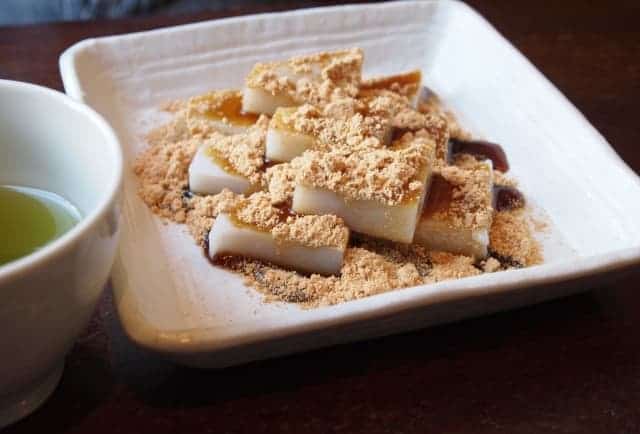
Enjoy Kuzumochi, a jelly-like dessert made from Kuzu starch, sugar, and water. People often serve it with ‘kuromitsu’ syrup and kinako for extra flavor, creating a delightful mix of sweet and earthy notes. It is often made in-house with local ingredients and traditional Edo period techniques, allowing you to enjoy its fresh texture, cool appearance, and satisfying firmness.
Kuzukiri
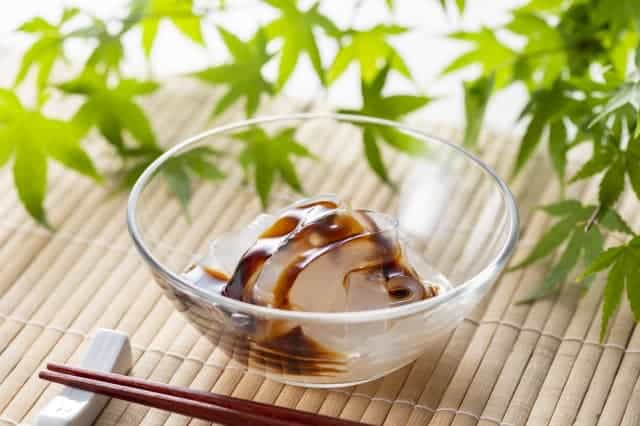
Kuzukiri, delicate and translucent noodles crafted from Kuzu starch, offer a refreshing, jelly-like texture. Typically served chilled with sweet syrups like kuromitsu or brown sugar syrup, it’s a go-to treat during Japan’s hot summers. You can also relish its taste, texture, and transparent beauty when served with black honey as a dessert.
Kuzu Monaka
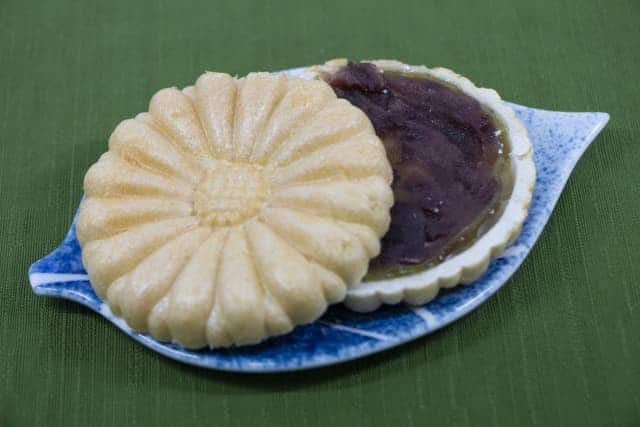
Kuzu Monaka is a beloved Japanese dessert, consisting of two thin, crispy rice wafers filled with sweet bean paste, like red or white bean paste. It offers a delightful mix of textures and flavors, making it a popular treat in Japan, perfect for enjoying with tea or during special moments.
Kuzu zenzai
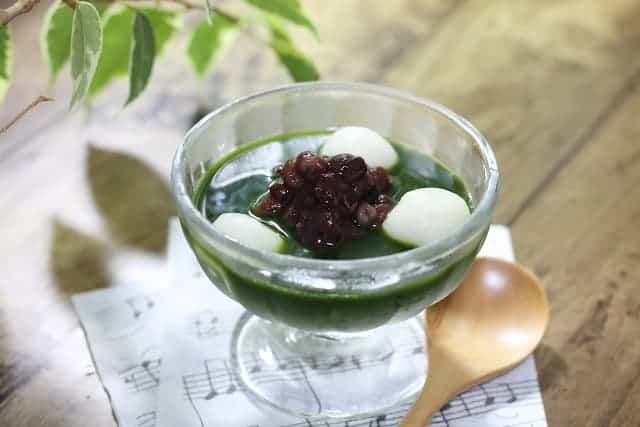
Kuzu Zenzai is a delightful Japanese dessert cherished for its comforting qualities. It features a warm, sweet red bean soup with soft rice cakes. Unlike many other desserts, it has a unique, heartwarming quality that makes it perfect for chilly days or as a soothing treat. The combination of creamy red bean soup and tender rice cakes creates a harmonious and satisfying experience, making it a beloved choice for those seeking both sweetness and comfort.
Kuzuyu
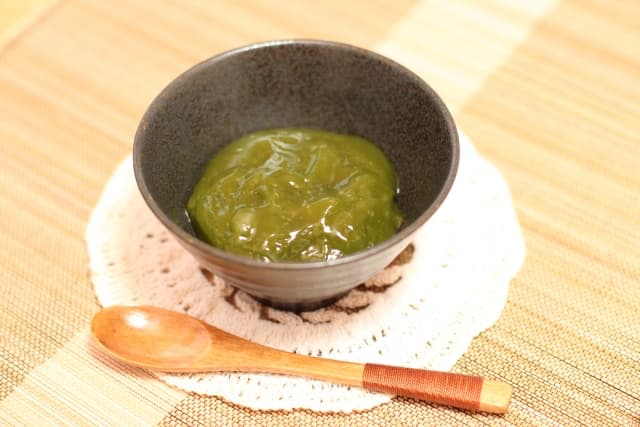
Kuzuyu is a classic Japanese hot drink, offering warmth and comfort. It’s made by dissolving Kuzu starch in hot water, sweetened with sugar. The result is a mildly sweet, smooth, and slightly thickened beverage, ideal for chilly weather. Kuzuyu is a soothing choice, warming both body and soul.
Kuzu’s Health Benefits
Warmth and Protection
Kuzu, derived from the root of the Kuzu plant, offers a treasure trove of health benefits. Kuzu root, often used in making Kuzuyu, boasts remarkable properties. During colds, it acts as a natural fever reducer and relieves muscle stiffness in the neck and back. In the sweltering heat of summer, Kuzuyu calms sensitive stomachs. Its gentle nature suits weakened bodies, providing comfort and warmth. Beyond this, Kuzu contains isoflavones, akin to those found in soybeans, offering potential advantages like osteoporosis prevention, menopause relief, and cholesterol management. Even after thorough washing, Kuzu retains valuable water-soluble soybeanin, showcasing its extraordinary qualities.
Digestive Aid
One of the remarkable qualities of Yoshino Kuzu is its digestive benefits. It acts as a soothing agent for the stomach lining, alleviating discomfort from indigestion, acidity, and heartburn. Consuming Kuzu-based products or drinks can help ease digestive issues, making it a go-to remedy for those seeking digestive relief without relying on synthetic medications.
Blood Sugar Control
Yoshino Kuzu’s low glycemic index means it has a minimal impact on blood sugar levels. This makes it a preferred option for individuals with diabetes or those aiming to manage their sugar intake. By helping stabilize blood sugar, Kuzu-based dishes and drinks can contribute to better long-term health outcomes, especially for those with diabetes-related concerns.
Nutrient-Rich Kuzu
Yoshino Kuzu is a nutritional powerhouse. It’s a rich source of vital nutrients like iron and calcium, essential for maintaining strong bones and overall health. This makes it an excellent dietary choice for individuals looking to increase their daily nutrient intake. Whether you’re a child in need of calcium for growth or an older adult concerned about bone health, Yoshino Kuzu provides a natural and nutritious solution.
History
In ancient times, before starch refinement, people used basic methods to eat kuzu roots. They dried them, ground them with a stone mill, mixed them with flour, shaped them into dumplings, and finally dipped them in sugar or soy sauce. This practice, known as “Nebimochi,” likely helped people survive during famines, especially in places like Aomori, which often lacked food due to its cold climate. The process of extracting starch from roots through water exposure, making even inedible parts edible, might have encouraged the development of agriculture.
Kuzu’s journey into Japanese sweets started after the Kamakura and Muromachi periods. Zen monks who had studied in China introduced the concept of dim sum, and honkudu flour became a key ingredient in sweets like kuzu manju and kuzukiri. Originally, these treats had a design resembling a daffodil flower, which led to them being called “daffodil” sweets. This beautiful name can still be seen on Japanese restaurant menus today.
Yoshino kuzu FAQ
- How do people use Yoshino Kuzu in Japanese cuisine?
People incorporate Yoshino Kuzu into various Japanese dishes, particularly for making kuzumochi, a jelly-like sweet, and kuzukiri, translucent noodles. It’s also a common choice to add thickness to soups, sauces, and desserts.
- Can regions outside of Japan grow Yoshino Kuzu?
While Yoshino Kuzu thrives in the specific climate of the Yoshino region, attempts to cultivate kuzu arrowroot in other areas have been made with varying levels of success. The quality and characteristics of the kuzu may vary depending on the local growing conditions.
- What is the difference between “Yoshino Kuzu” and “Yoshino Hon-Kuzu”?
Do you know the difference between “Yoshino kuzu” and “Yoshino Hon-kuzu”? It’s all about kuzu, a common vine plant. The starch inside its roots, called “Yoshino-no-sarashi” or simply “Yoshino-sarashi,” is made using a traditional method from the Yoshino region.
Now, here’s the distinction: “Yoshino Hon-Kuzu” is pure kuzu, with no other starch like sweet potatoes mixed in. This makes “Yoshino Hon-kuzu” pricier but tastier than regular “Yoshino Kuzu.”
How to make Yoshino Kuzu?
Ingredients
| Ingredients (for 3 servings) | Amount |
| Yoshino kuzu | 100g |
| Water | 400cc |
| Kinako | appropriate amount |
| Sugar | appropriate amount |
Method
Begin by dissolving real kuzu starch thoroughly in water. You can use a sieve to ensure a smooth mixture.
Place a pot with the kuzu-water mixture on medium heat. Stir it continuously with a rice paddle as you simmer. Keep simmering until the mixture turns transparent.
After simmering, remove the pot from heat and soak the mixture in cold water to cool it down.
Once it has cooled, cut the kuzu starch into small, manageable pieces. Place them in a bowl and serve. You can enjoy them with kinako (roasted soybean flour) and sugar for added flavor.
Where to buy Yoshino Kuzu?
Kuzuya Nakai Shunfudo (葛屋 ä¸äº•æ˜¥é¢¨å ‚)
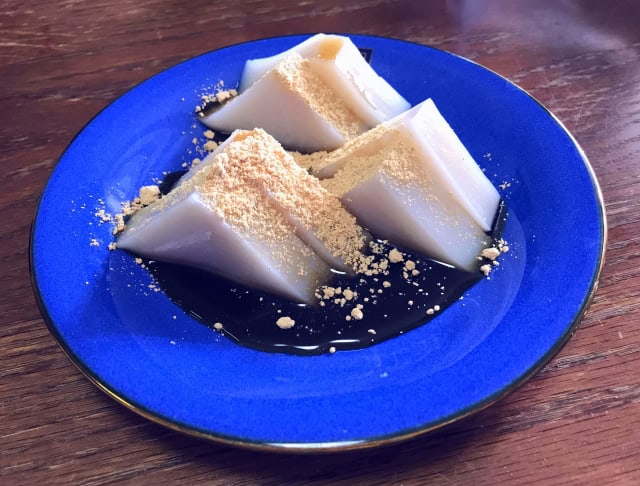
Located in Yoshino, Nara, Kuzuya Nakai Shunpudo specializes in two items: “Yoshino Hon-Kuzumochi” and “Yoshino Hon-Kuzukiri.” Owner Takayoshi Nakai’s mission is to introduce people to the world of kuzu. These delectable treats are prepared with precision and simplicity using only water and kuzu flour. Yoshino Hon-Kuzukimochi and Kuzukiri cost 800 yen each, boasting a unique flavor and texture. You can also buy “Yoshino Kuzu” and “Yoshino Hon-Kuzu” for home experimentation, priced at 670 yen and 1340 yen for 200g, respectively. Convenient options like Yoshino Kuzuyu (150 yen each) and Gyuhi Mochi with Kuiri (100 yen each) are also available.
Yoshino Kuzu Sakura (å‰é‡Žè‘›ä½ä¹…良)
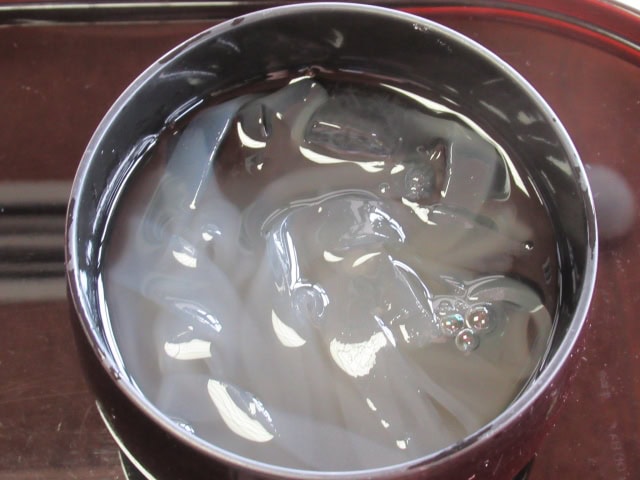
Let’s talk about Yoshino Kuzu Sakura, a lovely spot near Gango-ji Temple, close to Kintetsu Nara Station. This place is famous for its kuzu treats and is connected to the well-known “Yasokichi” in Yoshino. They use a charming 160-year-old building as their shop, creating a cozy atmosphere inside.
One of their specialties is Kuzu Zenzai, which costs 840 yen. They also serve Kuzukiri made from Yoshino hon-kuzu, known for its smoothness and satisfying texture. It’s great in both hot and cold versions, making it suitable for all seasons. They even have Kuzu Mochi, a chewy delight that’s perfect with kinako. The sweet taste of kuzu is soothing, especially after a day of sightseeing.
Kasuganinaijaya (春日è·èŒ¶å±‹)
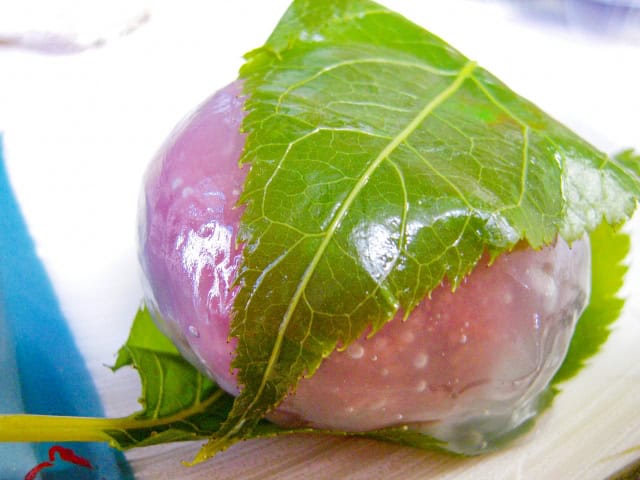
Kasuganinaijaya, near Kasuga Taisha Shrine in Nara, offers more than just Kuzukiri. Their Kuzu confections feature a refreshing sweetness suitable for all seasons. Don’t miss their Yamato specialty set meal, showcasing local treats like persimmon leaf sushi, tea porridge, and kuzu-based sweets. Enjoy the Japanese ambiance in their charming tea shop!
Online shopping
For those who want to order or buy Yoshino kuzu in Japan, you can mail it to your home online on Rakuten. You can check out some shops that sell Yoshino Kuzu via Rakuten by clicking below.
And for those who want to order or buy but live away from Japan. You can ship them from Rakuten by following the steps below. Rakuten offers International Shipping Service, so do not worry about how to receive your items. Rakuten Global Express is an online shopping service that allows users to shop at stores in Japan.
Sign up
First, you need a Rakuten ID. If you are already a Rakuten member, you can start using Rakuten Global Express. If you have not registered yet, click here.
Get your personal RGX address
After signing up, you will get a Japanese address: a Rakuten Global Express address.
Shop at stores in Japan
Now that you get yourself a personal RGX address (Rakuten Global Express address). You can shop online in Japan, click here to shop for Karashi (not only Rakuten but other online stores are also included).
When you have decided on your items, set the delivery address to your Rakuten Global Express address.
Confirm items
After items are shipped to the RGX address, they will be packed into one package. You also receive an email upon confirming these items and payment.
Once the payment is confirmed, your package will be delivered within a designated period depending on your shipping choice.
Takeaway
In summary, Yoshino Kuzu offers both delicious flavors and health advantages. You can explore its wonderful taste by making dishes at home with our recipes or by visiting recommended restaurants. It’s a chance to discover Japan’s special culinary heritage. So, don’t hesitate. Start your Yoshino Kuzu adventure now!
Explore articles featuring delicious Japanese sweets below!
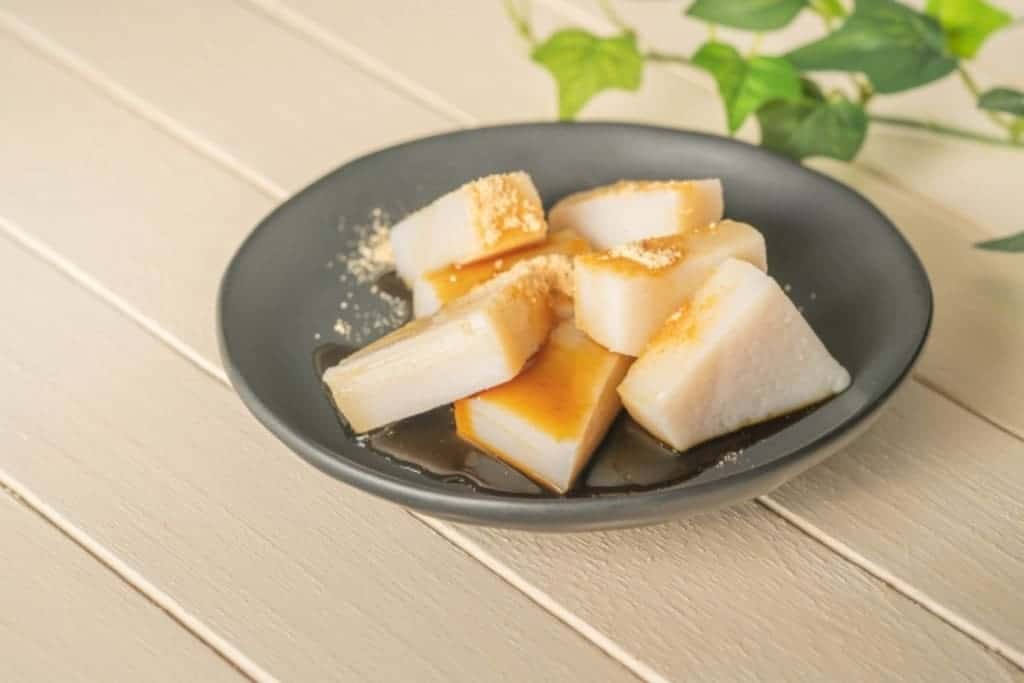
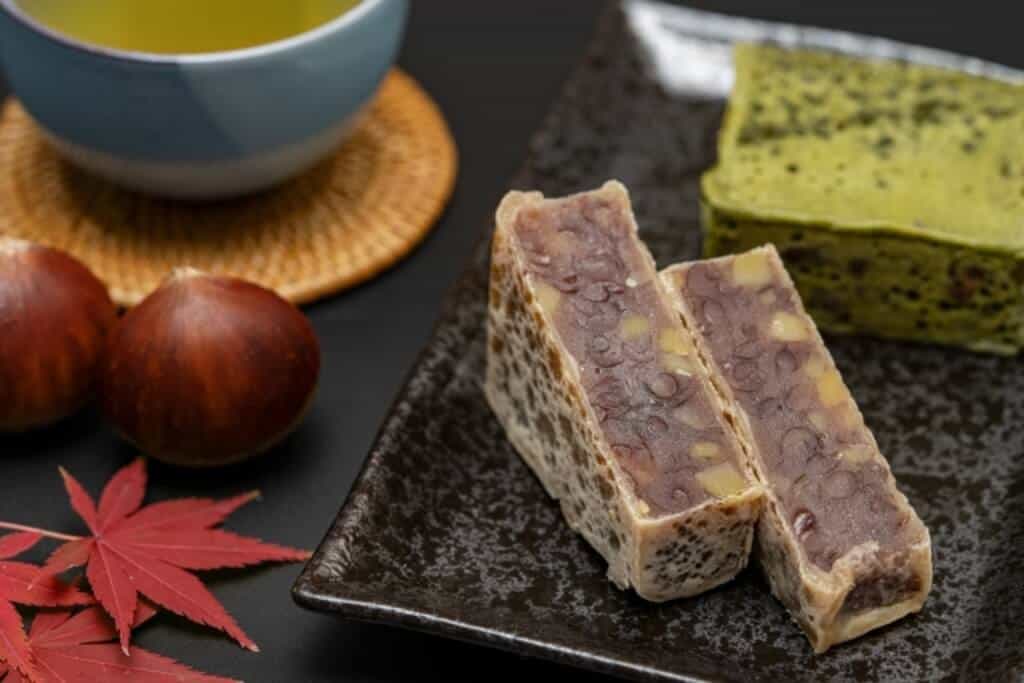
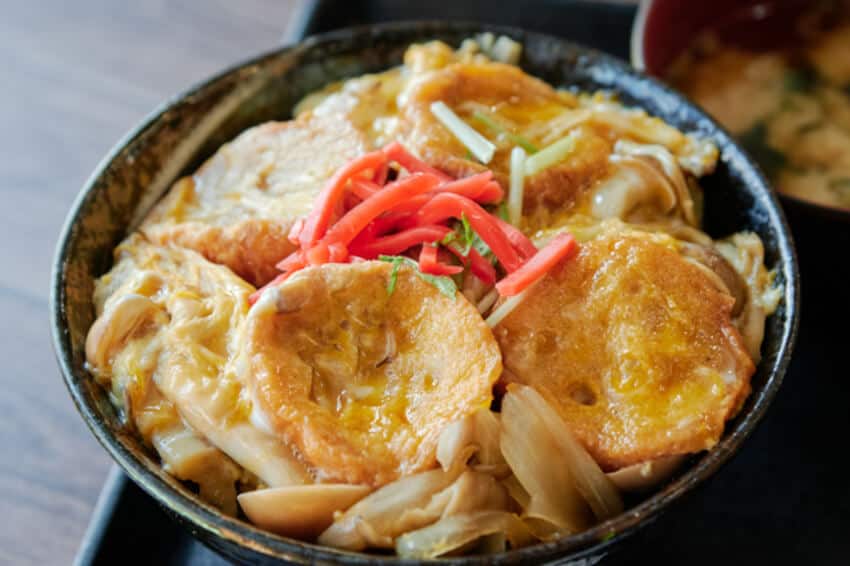
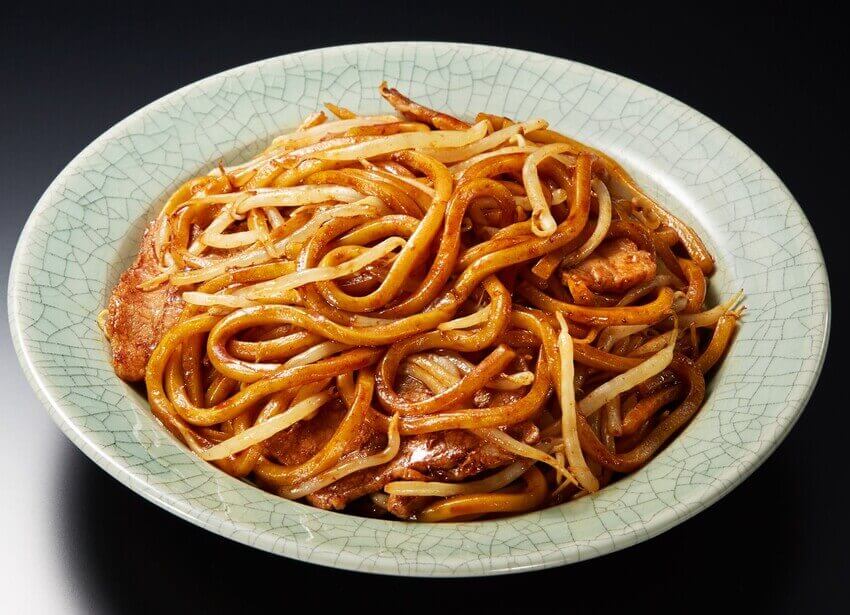




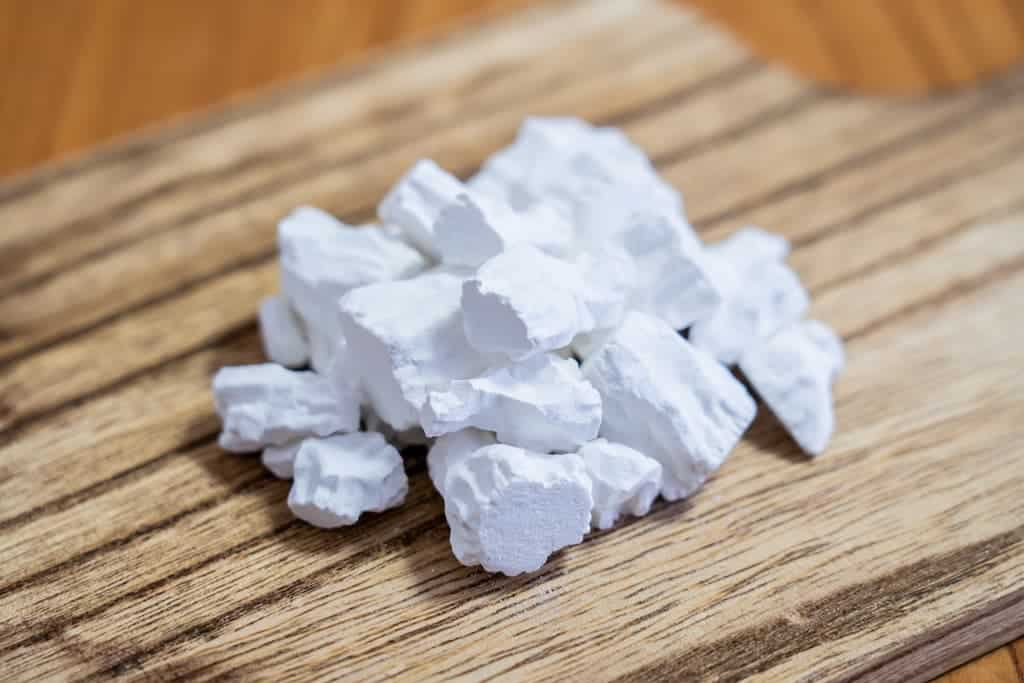
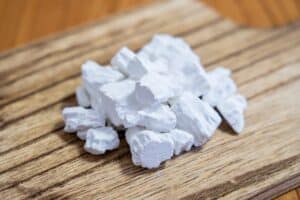
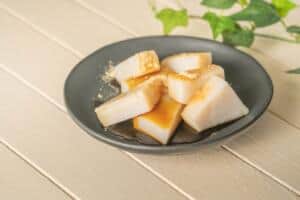
Comments